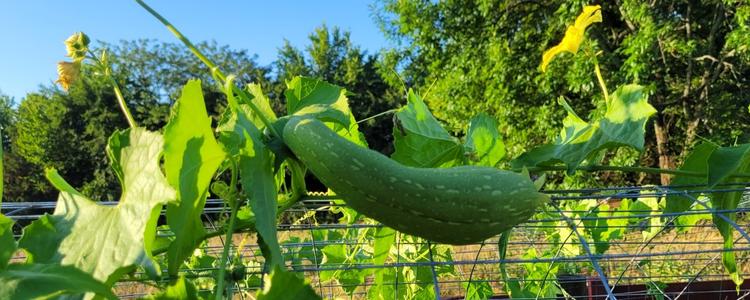Loofahs...nature's scrub brush.
Loofahs are the plant I never knew I wanted until I found out that they aren't actually sea sponges! It's a common belief and sea sponges do exist - but loofahs are more like fibrous zucchini-looking plants. I fell in love. I harvested the seeds from my first year planting. Some I will sell to share the joys of loofa growing and some I will replant this year and harvest more organic loofahs.


So here's the deal, I wanted to try ChatGPT since it's all I hear about everywhere. Below is what the query spit out for me. Accurate, yes. But it doesn't tell the whole story. Nowhere close to the whole story. I could go on about how AI can create and generate intelligent answers for us but can't necessarily give the human perspective. Here's my full disclosure human perspective - learn from my mistakes.
The generated ChatGPT text is highlighted in blue.
Growing Loofahs: How to Cultivate and Harvest Your Own Natural Sponges
If you're looking for a sustainable and eco-friendly way to clean your skin, consider growing your own loofahs. Loofahs are the dried, fibrous skeletons of a fruit from the luffa plant, which is a member of the cucumber family. Not only are loofahs a great natural alternative to synthetic sponges, but they're also easy to grow in your own garden. Here's how to cultivate and harvest your own natural sponges.
Choosing a Location
Loofahs thrive in warm and sunny locations with well-drained soil. Before planting, choose a location that receives at least 6-8 hours of direct sunlight per day. The soil should be fertile and well-draining, with a pH level of 6.0 to 6.8. If your soil is heavy or clay-like, add compost or sand to improve drainage.
Planting Loofah Seeds
Loofah seeds should be planted after the last frost date in your area. If you're starting seeds indoors, begin 3-4 weeks before the last frost date. Plant the seeds 1 inch deep and 6 inches apart in rows that are 5-6 feet apart. Water the seeds regularly to keep the soil moist, but be careful not to overwater. Loofahs are sensitive to frost, so protect young plants from cold temperatures.
Providing Support
Loofahs are vigorous climbers and can grow up to 20 feet long. They require support to climb, such as a trellis, fence, or other vertical structure. Provide a sturdy support structure before planting the seeds to avoid damaging the roots later on.
Caring for Loofah Plants
Loofahs require regular watering, especially during dry periods. They're heavy feeders, so fertilize with a balanced fertilizer every 2-3 weeks. Keep an eye out for pests like aphids and spider mites, and use natural pest control methods if necessary.
Harvesting and Processing Loofahs
Loofahs are ready to harvest when they're fully mature and the skin is brown and dry. To harvest, cut the loofahs from the vine with a pair of scissors. Peel off the skin to reveal the sponge-like fibers inside. Remove the seeds and any remaining plant material by rinsing the loofah under running water. Rinse the loofah thoroughly and allow it to dry completely before using it.
In conclusion, growing your own loofahs is a fun and rewarding project that yields a useful and eco-friendly product. With proper care and attention, you can cultivate and harvest your own natural sponges for years to come.
So now you know how to grow them, right? Mostly. Want to read my first hand and possibly funny inexperienced experience with them? Read here.
Want to have a blast and grow your own? Get your seeds here!

